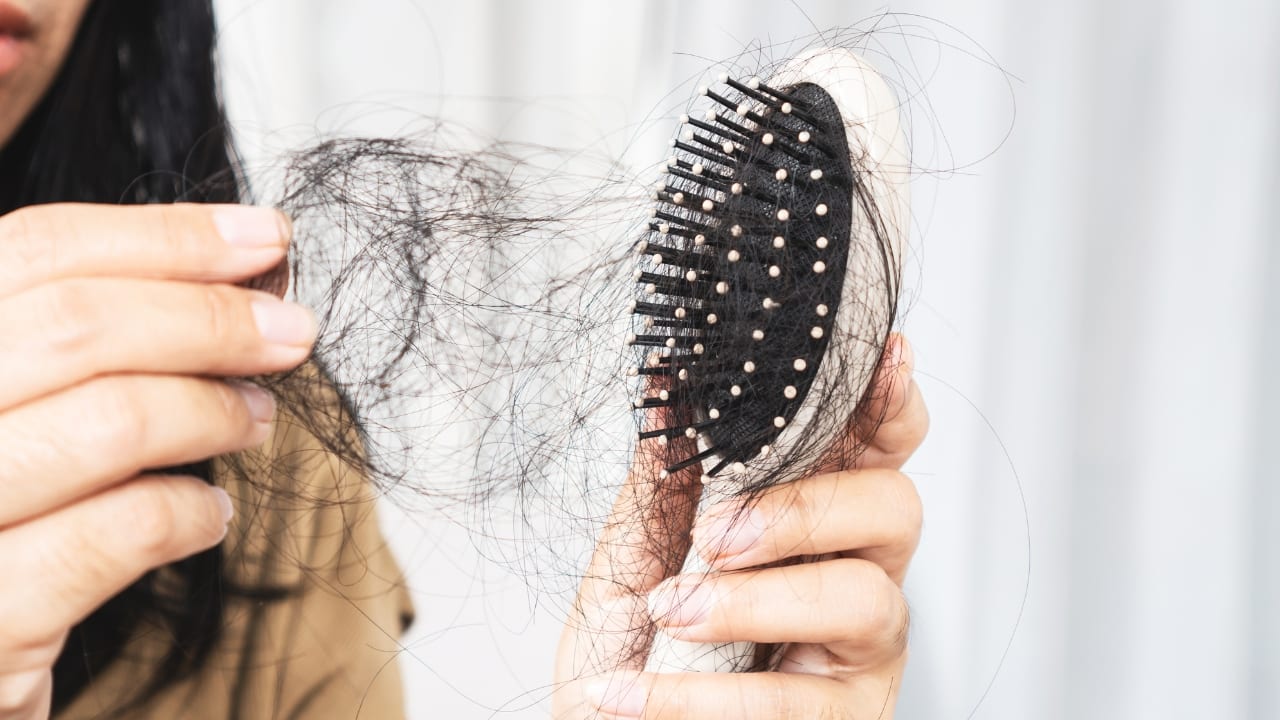
7 SIGNS YOUR HAIR FALL IS NOT NORMAL AND NEEDS IMMEDIATE ATTENTION
Hair fall is a natural process, with everyone losing a certain number of strands each day. Typically, shedding between 50 and 100 hair daily is considered normal. However, when hair loss becomes excessive or is accompanied by other concerning symptoms, it may indicate an underlying issue that requires attention. Understanding the signs of abnormal hair fall is crucial for early intervention and preventing further damage:
- Excessive hair loss
One of the most obvious signs that your hair fall is abnormal is an increased rate of shedding. If you notice more hair than usual on your pillow, in the shower, or when brushing your hair, it could be an indication of a problem. A sudden increase in hair fall, especially if it persists for several weeks, suggests that the root cause needs to be identified.
- Noticeable thinning
Gradual thinning is another sign that your hair loss may be more than just typical shedding. You may notice that your ponytail is not as thick as it used to be, or your scalp might appear more visible in areas where the hair density was previously higher. This thinning can be especially noticeable around the temples, crown, or parting line. Thinning hair can be a result of hormonal imbalances, nutritional deficiencies, or stress.
Also read | 12 healthy foods that help stop hair fall, nourish your locks
- Patchy hair loss
If you are experiencing bald patches or areas of hair missing from specific parts of your scalp, this is a clear sign that your hair fall is not normal. Patchy hair loss can be associated with conditions such as alopecia areata, an autoimmune disorder where the body’s immune system attacks the hair follicles. This condition may cause hair to fall out in small, round patches and could progress to more widespread hair loss if untreated.
- Hair falls out in clumps
Losing hair in clumps is not typical and may be a sign of telogen effluvium, a condition where a large number of hair follicles enter the resting phase of the hair growth cycle simultaneously. This can be triggered by physical or emotional stress, a traumatic event, surgery, or certain medications. When hair begins falling out in clumps, it is important to seek medical advice to determine the root cause and start appropriate treatment.
- Brittle or breakage-prone hair
In some cases, hair fall is not due to shedding from the root but breakage. If your hair becomes extremely dry, brittle, or prone to breakage, you may notice it snapping off mid-shaft rather than falling out from the scalp. Brittle hair can be caused by excessive heat styling, chemical treatments, or environmental factors like sun exposure and chlorine. When hair breakage becomes a persistent issue, it may be time to reassess your hair care routine and seek professional advice to restore hair health.
Also read | Stress causing hair fall? Stop it with these most effective tips
- Itchy, irritated scalp
An itchy, irritated scalp accompanied by hair loss may point to scalp conditions such as psoriasis, dandruff, or fungal infections like ringworm. Inflammation of the scalp can weaken the hair follicles, leading to increased hair fall. If you experience significant scalp irritation along with hair shedding, consulting a dermatologist can help diagnose the problem and provide appropriate treatment.
- Changes in hair texture
A sudden change in hair texture, such as hair becoming thinner, finer, or more fragile, can be a sign of an underlying issue. Hormonal changes, such as those experienced during pregnancy, menopause, or thyroid imbalances, can alter hair texture and lead to increased shedding. If you notice significant changes in the texture of your hair along with abnormal hair fall, it is worth seeking medical advice.
2024-09-16T10:43:51Z dg43tfdfdgfd